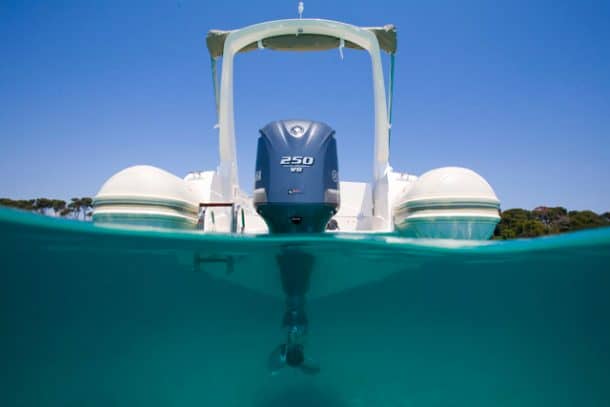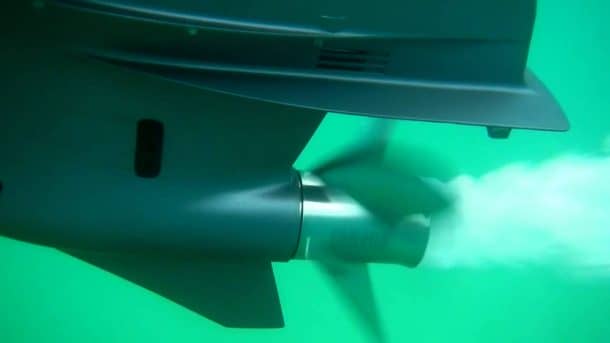The question in the title is similar to “is front wheel drive in automobiles more efficient than the rear wheel drive.” The answer, as you suspected, is somewhat similar as well, as the application and efficiency of one type of drive over another depend on multiple factors such as driving conditions, types of automobiles, driver’s requirements, etc.

Have a look at the following reasons:
- The airplanes are needed to generate lift as well as thrust. Thus, a front-on engine makes more sense. In comparison, boats will only float, so they just need to produce thrust which can be achieved using a rear propeller.

Pic Credits: UK.boats - The tractor prop provides the airflow over the airframe in an airplane, and this significantly helps it gain lift and stability at lower speeds. An aircraft needs to lift its nose into the air to take off, meaning if a pusher configuration was installed, its rear prop has to be much higher off the ground to maintain clearance. In comparison, a boat only needs thrust and no lift; making a back propeller and pusher configuration the most practical choices for it.
- Another logical reason for the placement would be that when smaller boats accelerate quickly, their nose has a tendency to lift out of the water. So, if a front mounted prop is installed, it would be working partially in the air which is obviously not desired.
- An airplane needs the propeller airflow hitting the wings and other control surfaces to improve its handling, so, the placement of the propeller in front of the wings would be more beneficial. On boats, putting the propeller at the front will disrupt the flow of the water stream accelerated by the propeller, so it is only logical to put the propeller aft of the hull.

Pic Credits: UK.boats
- Finally, the desired Centre of Gravity (CG) point in a plane is closer to the nose for longitudinal stability. Thus placing the engine at the front would take most of the weight to the front, thus, meeting this requirement. For a boat, the longitudinal stability is not an issue, and the only objective is to produce thrust efficiently, which can be done by using a pusher configuration.
Do you have something to add to this article? Comment below!





Partially true but you forgot about drag force coming on boat if it is placed on front ultimately it’ll be loss of energy